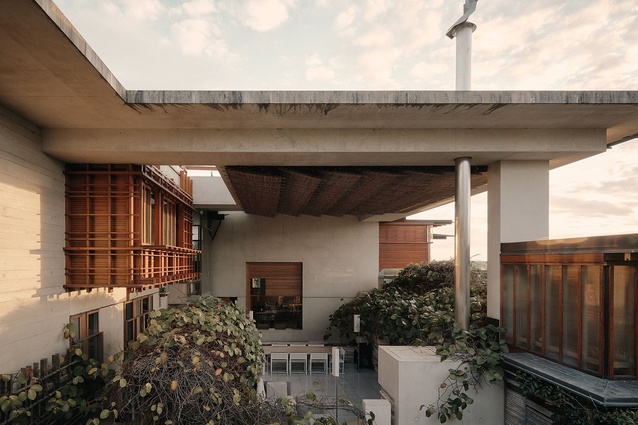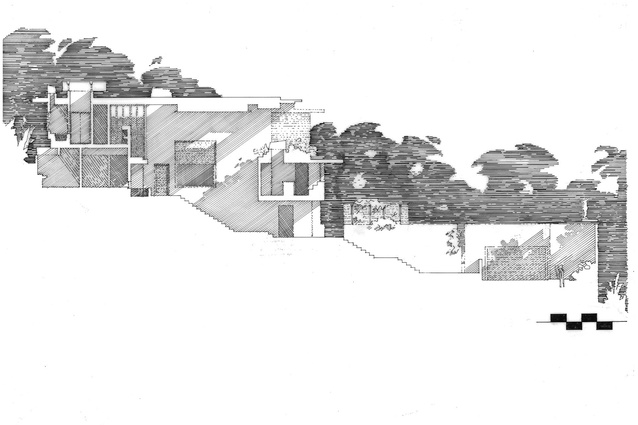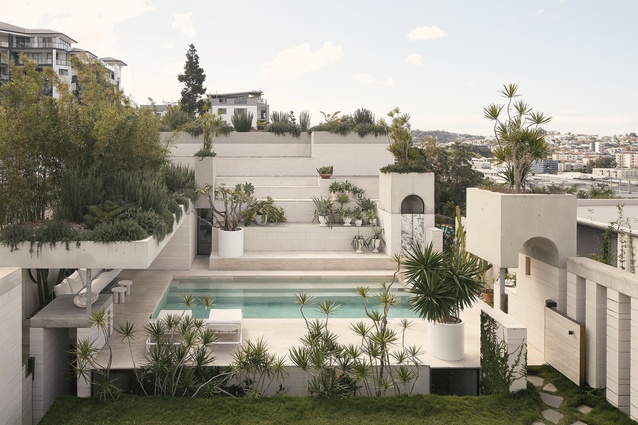Book review: The New Queensland House
Christopher Kelly reviews the large-format book, edited by Cameron Bruhn and Katelin Butler, and finds it offers plenty of which Kiwis can make use architecturally, in our burgeoning cities.
“I cannot think of any metaphor which better describes the organic growth of culture and scholarship than that of the coral organism. One lays down one’s own skeleton on the heap of bones left by others, who by doing so have built up a patterned structure. One also does it for the benefit of later comers, who will in turn lay their remains on yours. It is the inclusive effect of this accretion, not the individual contribution, that creates cultural meaning.”
-Michael King recalling his UK conversation with New Zealand expatriate Eric McCormick.1

I am thumbing through the large-format Thames & Hudson book The New Queensland House, edited by Cameron Bruhn and Katelin Butler. It’s a pleasant pastime, I think, that all architects share: dreaming away in a good architecture bookshop (though, like the coral reef, in our online age, cosy library-like venues for this sort of reverie are rapidly declining).
I’m weighing up whether this new book is ‘coffee table’ or one worthy enough to add to our architecture library: to contemplate and dip into when we are curating relevant residential precedents for a project. My first test is always the inclusion of scaled drawings. This book is methodical, with 1:5000 location plans at the start, and scaled floor plans and sections of each building at the end, of each example. We make a lot of fuss about the importance and beauty of the section at Architecture Workshop and there are few books where the section drawings make the cut, so there’s a big tick for the documented drawings in this book.
Next, is a scan of the Contents page for some revelation/insight about the book’s structure. There’s a standard introduction and group of essays, and then 28 houses in all, curated around four themes: Outdoor living, Landscape, Tradition and Suburb. Bruhn and Butler have made some rules for themselves, selecting seven houses under each of these themes.
As well as the usual well-chosen photos, each house is accompanied by a short commentary on its ‘architectural setting’,situating the design approach within the broader Queensland architectural culture, and the ‘lived experience’, a more personal conversation with the clients around the brief. So, I’m intrigued by the disciplined structure.
What might an architect practising in Aotearoa learn from this new collection of Australian houses?
Subtropical dwellings in ‘Austraya’ will inevitably have elegant, open structures with beautiful indoor–outdoor flows; so, first impressions are that these houses might offer relevant climatic precedents worthy of study only if we were looking at a site, say, in the top half of the North Island.
To compare with a similar local publishing endeavour of about the same size, New New Zealand Houses published in 2007 exhibits a snapshot of “25 significant houses completed since 2000”, illustrated by our photographer maestro Patrick Reynolds with both an essay and an articulate two-page commentary on each building by historian John Walsh.2
To me, Walsh’s introductory essay raises questions about the ways in which we attribute significance to people and events in the history of our architecture in Aotearoa.
Also, in New Zealand Architecture, arguably our most comprehensive history text, Peter Shaw comments that our New Zealand architectural history is less like the history of a nation, where we hear about only the most exceptional figures and extraordinary events, but more like the history of a family, in which every moderately interesting story is included. “New Zealand’s architecture history is more notable for the number of individualists it has produced than the existence of separate schools or traditions.”3
‘Schools’ seem difficult to identify in New Zealand architecture (very little seems to be passed from one generation to the next).
In stark contrast to New New Zealand Houses, The New Queensland House adds layers of significant scholarship with two exceptional essays that present an overarching insight into the ‘Queensland School’.
These essays set out the origins of a low-density, detached-dwelling, garden suburb type and the unique history of the elevated ‘timber and tin Queenslander’: a completely different sort of typology from the brick terrace model adopted in NSW and Victoria. They present the evolution of significant new dwelling versions, with gardens often an anchor to the plan, and their authors. They also discuss how the design thinking had a broader impact on suburban densification and building neighbourhood connectedness.
The larger essay, ‘Houses From a School of Ideas’ by Brit Andresen and Michael Keniger, gives a selection of personal recollections of architectural teaching and praxis in house design within the landscape of coastal south-east Queensland. They have drawn upon their contributions to teaching, scholarship and exemplary built works, both those of their own practices and those of their colleagues, from the late 1970s to the late 1990s.
Their ‘eight sketches’ (surveys of incidents and highlights) sit within the frame provided by the suite of houses selected for the book and their own thread of exemplary houses and commentary illuminates “how the well-directed teaching of architecture can underpin and advance ideas in practice”.
The second essay, ‘Inside becomes Outside – Queensland’s Domestic Landscape’ by Silvia Micheli and Ashley Paine, identifies the landscape strategies developed by Brian Donovan and Tim Hill in their 1998 seminal ‘C House’ and how ongoing contemporary practices have re-interpreted and developed these ideas further.
Donovan Hill’s design ideas and architectural work radically shaped the architectural culture and community in Brisbane and the surrounding region. This fascinating architectural discourse identifies how their investigative design, producing more than 1000 A3 drawings over an extended time frame, exemplified the sort of Scarpa-esque focus Hill and Donovan brought to their architecture. The book is worth buying for this essay alone.
In terms of continuous innovation and a purposeful response to the inherent qualities of place that underwrite architectural cultural accretion, Andresen notes that, “The valuable interactive practitioner–teacher practice was put under strain in the 1990s – as the universities were placing greater emphasis on higher degrees and conventional research indicators”. So, looking ahead, the challenges facing university programmes in architecture (as they are often hosted within larger faculties of differing disciplines) are best met by strengthening the interaction with critical practice.
The New Queensland House, based on understanding its local exemplars and using these as launching pads to inform future practice, presents a working New World example of how antipodean architecture culture can evolve and culturally enrich our lives. Climate aside, this critical discourse offers plenty on which to reflect for the broad church of Kiwis making, and making use of, architecture in our burgeoning cities.
References:
1 Michael King, Being Pakeha Now, Penguin 1985.
2 Patrick Reynolds and John Walsh, New New Zealand Houses, Godwit, 2007.
3 Peter Shaw, New Zealand Architecture, Hodder & Stoughton, 1992, Andrew Barrie, NZ Architecture Family Tree, 2008.












